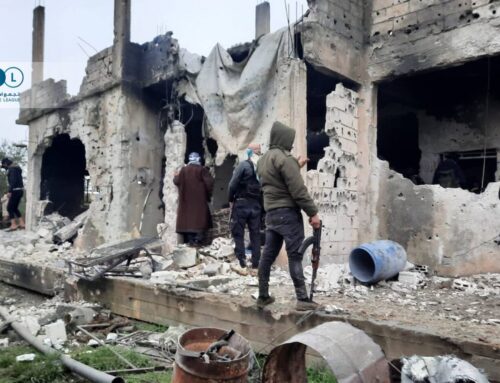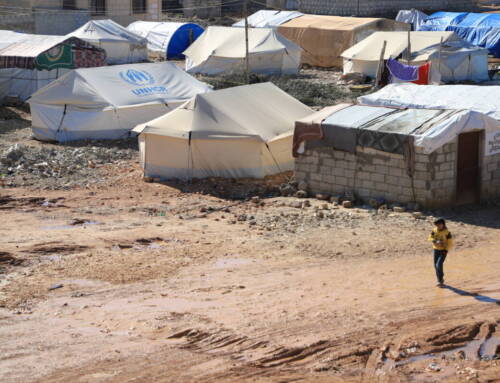Rural Hama ‘an open front,’ says activist
August 26, 2014 Earlier this year, Hama was one of […]
26 August 2014
August 26, 2014
Earlier this year, Hama was one of the quietest fronts in Syria. Once the site of the largest demonstrations against Assad in 2011, the regime opened fire in late July of that year and subdued the peaceful protests. It has remained under tight government control ever since.
Recently, however, Hama has become one of the most important battlefields in Syria. In late July, a coalition of opposition groups including Jabhat a-Nusra, Ahrar a-Sham and Harakat Hazm launched a campaign called Badr a-Sham to capture the Hama Military Airport. Located just west of the provincial capital, the airport and accompanying base are where the regime produces barrel bombs and launches subsequent raids in Aleppo.
While the city is regime territory, the province is up for grabs. The north, south and east are in rebel hands, and according to a 23-year-old activist on the ground, “they are bombed almost daily.”
West Hama province is home to Alawite villages that support the regime.
The province is considered a gateway to other vital areas: Aleppo to the north, the coast due west and A-Raqqa province to the east, now fully under the control of the Islamic state.
Q: What about the countryside of Hama?
The northern, southern and eastern countryside of Hama are mostly controlled by the rebels. The western Hama countryside are known to be Alawite, and most of them support the regime. The western countryside is completely controlled by shabiha. The military base Brigade 47 is also in the southern countryside.
The humanitarian situation is very bad because the whole area is an open front against the regime and is bombed daily. It is a disaster in every sense of the word.

Q: What is the status of the regime inside Hama city? Does it have security centers, local administration or state organizations? Are the schools and universities still running?
The regime is overshadowing the daily life of the people with the army’s practices at checkpoints and their daily harassments of civilians. There are multiple security centers: al-Qala area where the military is centered, the primary security branch, the air force intelligence, the state security branch. All the local administrations and the state organizations are still running.
All the schools and universities are also functioning, they never stopped. Most of the students are going to school and university normally.
Q: Who is supervising the distribution of aid inside Hama? Is the regime distributing it?
The aid only comes from the Red Crescent.
Q: Do the rebels control areas inside Hama city and, if so, what are they? What is daily life like for the rebels?
They don’t control any areas inside Hama city. The entire city is under regime control.
The rebels are stationed in the Hama and Idlib countryside. The rebels are bombed almost daily.
Q: Is there any support for brigades in the Hama countryside?
The brigades and battalions in rural Hama have very little support relative to the other cities. They largely depend on supplies taken from the captured checkpoints and some support from the local military council and individual supporters.
Q: What are the methods of resistance in Hama, and how in what ways are the rebels confronting the regime?
There is no way for the rebels to resist in the city, but in the countryside the rebels face the regime with whatever weapons they have. The rebels were able to capture important military points with their current weapons.
For more from Syria Direct, like us on Facebook or follow us on Twitter.







